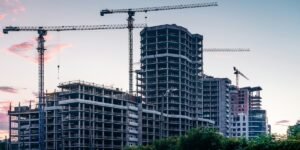By: Linda Harris
As the backbone of construction standards, ensuring compliance with building codes in structural design is a legal obligation and, beyond that, a pivotal step in guaranteeing the safety and integrity of your projects. Disregarding these codes can lead to costly delays, hefty fines, or structural failures.
Ricardo Jebb Bruno, a skilled Structural CAD Technician, discusses practical guidance to navigate the complex landscape of building regulations. By understanding the basic principles, you can maintain compliance and achieve long-term success in every project.
Understanding Building Codes
Building codes assess that structures are safe, durable, and livable. They lay down a set of rules and standards that construction projects must adhere to. Building codes are a collection of regulations and standards designed to ensure the safety, health, and welfare of occupants in buildings. They cover a wide range of areas to make sure structures can withstand various loads and stresses.
These codes are crucial because they protect everyone from dangerous building practices and ensure that buildings are constructed with safety as a priority. By following these codes, architects and builders help to prevent accidents and structural failures which can lead to loss of life and property. Essentially, building codes act as a safety net for occupants.
Divided into different categories, building codes are based on the type of structure and its use. Understanding these categories helps in ensuring that all aspects of construction are compliant.
Residential codes govern housing structures, from single-family homes to apartments, providing safety and comfort through fire safety, structural integrity, and weather protection standards. Commercial codes apply to non-residential buildings like offices and industrial facilities, addressing specific business needs like robust electrical systems and emergency exits.
Specialized codes such as electrical and plumbing codes guarantee safe installations and proper water system functionality. Understanding these various codes helps construction teams create buildings that meet legal requirements while promoting safety and comfort for all users.
Research and Stay Updated
Building codes require constant attention and dedication. These rules maximize the safety and stability of structures. Keeping up with the latest codes is critical for every architectural and engineering professional.
Building codes can vary significantly between local and national standards. Local codes address unique environmental conditions, like seismic activity or heavy snowfall, tailored to specific community needs. National standards provide uniformity and safety benchmarks across the nation. Neglecting one can lead to serious legal or safety issues.
On the other hand, national standards aim to set a baseline of safety and quality across the nation. National codes are designed to provide uniformity and safety benchmarks to ensure that structures meet acceptable safety standards, no matter where they are built. Neglecting one can lead to serious legal or safety issues.
To stay updated, reliable resources like the U.S. Department of Housing and Urban Development (HUD) and industry publications offer timely information. Joining organizations like the International Code Council (ICC) also provides access to training and updates on code changes.
“By using these resources, you’re part of an evolving conversation about safety and innovation in structural design,” says Ricardo Jebb Bruno. “Stay proactive, be informed, and remember that keeping up is a core part of your professional responsibilities.”
Collaboration with Professionals
In the journey of structural design, ensuring compliance with building codes is essential. It requires collaboration between various professionals, including architects and engineers. Structural engineers play a key role in interpreting and applying building codes effectively, ensuring designs are safe and compliant. They carefully assess factors like load distribution and material strength to guarantee structural integrity.
By collaborating with structural engineers from the start, architects and builders can ensure that ideas are structurally feasible and comply with relevant codes. This collaboration often saves time by preventing costly revisions later. Engineers provide solutions that blend creativity with compliance, turning initial concepts into reality without compromising safety or legality.
Early collaboration with engineers and building inspectors helps architects ensure that designs meet code requirements. Involving inspectors during the design phase allows for early feedback, identifying potential issues before construction begins. This proactive approach prevents costly revisions and fosters smoother project completion.
Documentation and Record-Keeping
Compliance with building codes promotes safety, durability, and trust. Effective documentation and record-keeping play a key role in achieving compliance, allowing both designers and inspectors to make informed decisions throughout the project lifecycle.
Detailed design documents act as the backbone of any construction project. These documents embody the technical aspects, layouts, and specifications that ensure every element of your project meets the required standards. When design documents are comprehensive, they facilitate smoother compliance checks because everything the inspector needs is right there in detail.
An inspector’s role is to analyze and facilitate that codes are met for safety and integrity. Detailed documentation helps them see the complete picture, ensuring nothing is overlooked. These documents can also serve as a solid defense if disputes arise, proving that all regulations were considered and followed from the start.
Keeping track of all building code requirements can feel overwhelming. This is why using building code checklists is a smart choice.
Notes Bruno, “These checklists work as reliable guides, ensuring every critical aspect of the codes is accounted for during the design and construction phases.”
Checklists can be your safety net. They catch potential oversights by providing a structured framework to follow. A well-crafted checklist allows you to systematically verify each code requirement, from foundational structures to fire safety measures. By using these tools throughout the project, compliance is not just an afterthought but an integral part of your planning and execution process.
Strong documentation and systematic checklists together create a foundation of accountability and thoroughness, essential for any compliance-focused structural design project.
Regular Reviews and Audits
Regular reviews and audits not only safeguard code compliance but also enhance the overall quality of the project. Both internal and third-party audits can identify and resolve potential issues proactively. Internal audits are valuable for the early detection of compliance issues, allowing design teams to catch mistakes that might otherwise go unnoticed. They offer the opportunity to make improvements and corrections when they are easier and less costly to address.
While internal audits provide insights, third-party audits add an extra layer of scrutiny. Independent experts review the project, offering fresh perspectives that can highlight potential issues missed by internal reviews. These audits bring specialized expertise, ensuring adherence to required codes and standards.
“Engaging both internal and third-party audits represents a commitment to excellence,” says Bruno.
Achieving compliance with building codes in structural design is essential for safety and legality. Following established guidelines ensures that structures can withstand environmental challenges and protect occupants, enhancing both structural integrity and community welfare. By integrating compliance into their workflow, designers and engineers can build confidently and responsibly.
Published by Charlie N.












